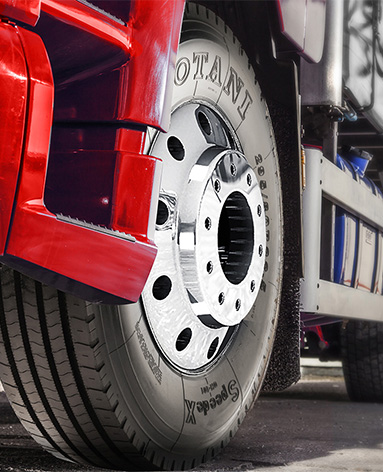Abu . 01, 2024 05:51 Back to list
Guidelines for Replacing Brake Drums and Ensuring Vehicle Safety and Performance Stability
Understanding the Changing of Brake Drums A Comprehensive Guide
Brake drums are crucial components of a vehicle's braking system, functioning to slow down or stop the vehicle by converting kinetic energy into thermal energy. Over time, these drums can wear out, leading to reduced braking efficiency and potentially hazardous driving conditions. Thus, understanding when and how to change brake drums is essential for maintaining vehicle safety and performance.
Signs That Brake Drums Need Replacement
There are several signs that indicate it's time to replace your brake drums. One of the most noticeable signs is a decrease in braking performance. If you find that your vehicle takes longer to stop or feels less responsive when you engage the brakes, this could be indicative of worn brake drums. Additionally, you may hear unusual noises, such as grinding or squeaking, which could suggest that the brake shoes are worn down and are making contact with the drum's surface.
Another sign to watch for is the presence of a vibration or pulsation when pressing the brake pedal. This can signal that the brake drum is warped or unevenly worn, impairing its function. Visual inspection is also important; if you notice cracks, grooves, or a significant amount of rust on the drum, it’s high time to consider replacing them.
The Importance of Timely Replacement
Timely replacement of brake drums is not only about maintaining performance; it’s about safety. Worn or damaged brake drums can lead to brake failure, increasing the risk of accidents. Moreover, if you ignore the issues with your brakes, you could end up causing additional wear and tear on other components of the braking system, such as the brake shoes and the wheel cylinders, ultimately leading to more expensive repairs.
The Process of Changing Brake Drums
Changing brake drums may seem daunting, but with the right knowledge and tools, it can be done efficiently. Here’s a step-by-step guide to the process
changing brake drums

2. Raise the Vehicle Use a hydraulic jack to lift the vehicle, and secure it with jack stands. Always ensure safety by double-checking that the vehicle is stable before working underneath it.
3. Remove the Wheels Unscrew the lug nuts using the lug wrench and take off the wheels to access the brake drums.
4. Inspect and Remove the Brake Drums Once the wheels are off, inspect the brake drums for signs of damage. If they need to be replaced, remove the retaining screws or clips securing the drums in place, and gently pull the drums off the wheel hub.
5. Install New Brake Drums Clean the wheel hub and install the new brake drums in place. Ensure they are properly secured with the retaining screws or clips.
6. Reassemble Replace the wheels, tighten the lug nuts, and lower the vehicle back to the ground.
7. Test the Brakes Before hitting the road, pump the brake pedal a few times to seat the new drums and ensure they function correctly.
Conclusion
Changing brake drums is an essential maintenance task that should not be overlooked. Regularly inspecting your vehicle’s braking system and understanding the signs of wear can save you from expensive repairs and potential accidents. Whether you choose to do the work yourself or take your car to a professional, being proactive about brake maintenance will ensure that you remain safe on the road. Remember, your safety depends on it!
-
High-Quality Brake Drum MAZ – Durable Drum Brake Drum & Brake Drum and Brake Shoe Solutions
NewsJul.05,2025
-
High-Quality Brake Drum Iveco - Durable Drum Brake Drum & Brake Shoe Solutions
NewsJul.05,2025
-
High-Quality Brake Drum MAZ – Durable Drum Brake Drum & Brake Drum and Brake Shoe Solutions
NewsJul.04,2025
-
Brake Drum Man - High-Quality Drum Brake Drums & Brake Shoes for Reliable Performance
NewsJun.24,2025
-
High-Quality Brake Drum Kamaz – Durable Drum Brake Drum & Brake Shoe Replacement
NewsJun.10,2025
-
High-Quality Brake Drum Liza for Drum Brake Systems - Superior Durability and Performance
NewsJun.10,2025
